Seiko Prospex Diver’s 55th Anniversary SLA043J1 and SPB183J1
Taking a closer look at two historic-inspired divers by Seiko.

In March 2020, Seiko celebrated the 55th anniversary of its first dive watch. Accustomed as we are to seeing new models pop up to celebrate even the most insignificant of occasions in Swiss watchmaking, the year 1965 marked a truly important milestone at Seiko. In 1965, Seiko took the plunge and developed Japan’s first dive watch – the so-called 62MAS – an automatic watch with 150m water-resistance that would establish the strict performance and aesthetic criteria for generations of dive watches to come. In addition to the trilogy of commemorative models we have covered, Seiko extends the celebrations with the revival of two other models, the 62MAS-inspired SLA043J1 and the Willard-based SPB183J1.
The 55th-anniversary celebrations got started with the launch of upgraded versions of the three most significant watches of this dynasty: the 62MAS 150m of 1965, the Hi-Beat Diver’s 300m of 1968 and the Professional Diver’s 600m of 1975.

The revival of yet another iconic 1970s model, the famous Captain Willard, joined this trio. All four models demonstrate the sticking power of their designs that are still relevant today. The manufacture has prolonged the celebration with these two historic references (SLA043J1 of 1965 and the SPB183J1 of 1970), also limited editions but more attractive thanks to the intensified blue tones that make them easier to wear on a daily basis.
Seiko Prospex Diver’s SLA043J1
When Seiko launched its first dive watch in 1965, the 37mm diameter of the case was considered large for the day. Seiko had created a watch for professional divers and the dimensions were fundamental to enhance legibility. Despite its large size, it was widely accepted by civilians thanks to its attractive design. Today, the original 37mm isn’t so much in line with expectations, so Seiko has modernised the proportions: the watch now has a 39.9mm diameter, a height of 14.1mm and a length of 47.9mm. These measurements and the shape of the case produce a restrained watch that even looks smaller than its dimensions would indicate, a feature that makes it still highly attractive and retro-styled.
The case of the Seiko Prospex Diver SLA043J1 is made from Ever-Brilliant steel. Not only is it more lustrous than 316 stainless steel, Ever-Brilliant is 1.7 times more resilient, especially to corrosion. Ever-Brilliant is the equivalent of 904L steel that Rolex uses, for example. Unlike the original trilogy, the case is brushed throughout. The satin-brushed surfaces are perfectly executed for a more fluid profile.
The water-resistance has also been improved to 200 metres (the standard for Seiko Prospex models). The bezel is unidirectional (the original was bidirectional) and has a luminous dot at 12 o’clock; it is graduated in 1-minute increments throughout, just like the original. The box-shaped sapphire crystal has an anti-reflective treatment and the crown is screwed down.
The elements on the dial are similar to those of the original 1965 model with slight differences. The main one is the seconds hand which has been picked out in a lighter shade of blue than the dial to distinguish it from other models. The Diashock inscription corresponding to the original shock absorber is maintained as well as the jewel count (increased from 17 to 26, due to more modern mechanics). The Divers 200 inscription appears above the Diashock and jewels and has been spaced out so that it has the same width as the lower inscription. Naturally, the indices and hands are all treated with Seiko’s proprietary LumiBrite.
Behind the screw-down caseback, decorated with the same dolphin as the original and the limited series number, is Seiko’s automatic calibre 8L35. Specifically developed for dive watches and assembled by hand at the Shizukuishi Watch Studio, it is anti-magnetic, beats at 4Hz and has a 50-hour power reserve. The maximum daily deviation is of -15/+10 seconds a day, but it is common knowledge that these calibres perform closer to the parameters of a certified chronometer.
The Seiko Prospex Diver 55th Anniversary SLA043J1 is limited to 1,700 units. The retail price is EUR 5,050. The watch comes on a black silicone strap and an additional blue silicone strap is provided in the commemorative gift box.
Quick facts: 39.9mm diameter x 14.1mm thickness – Ever-Brilliant steel, brushed – unidirectional rotating bezel with aluminium insert – screw-down crown – 200m water-resistance – blue dial with Lumibrite on indices, hands and bezel- automatic calibre 8L35 with 50 hours power reserve – reference SLA043J1 – limited to 1,700 pieces – EUR 5,050
Seiko Prospex Diver’s SPB183J1
Five years after Seiko’s first diver’s watch, a new model was introduced with an asymmetrical case design and the relocation of the crown to 4 o’clock for extra security. The model launched in 1970 by Seiko gained international fame when it appeared on Captain Willard’s wrist in Apocalypse Now. The Seiko watch wasn’t on Willard’s wrist as part of a marketing campaign but because it was much appreciated by American soldiers in Vietnam. It was a solid, resilient watch with a different shape from the usual suspects and, it was highly accessible. The move to civilian life was a natural consequence and the reason why the re-edition has met with such success.
For this new version, Seiko has gone for the colour blue, a shade we associated with dive watches and, as mentioned above, a colour that is easily integrated into daily life. The watch respects the shapes that made it famous (which are the predecessor of the most famous Seiko case: the King Turtle).
The watch has a 42.7mm diameter, a height of 13.2mm and a length of 46.6mm. Although the protruding area protecting the crown on the lower part of the case makes it look larger than it really is, the placement of the crown at 4 o’clock makes it very comfortable to wear. Seiko has used its ultra-resilient coating on the case and bracelet, ideal for a watch that is designed to tackle hostile marine environments.
The surface of the notches on the bezel has been polished using Seiko’s Zaratsu technique, something that is usually reserved for Grand Seiko imparting a distortion-free reflection and a special brilliance. It also adds a refined touch to the watch and upgrades the blue anodised aluminium insert. The bevelled sapphire crystal barely rises above the bezel.
The blue dial is extremely attractive and goes well with the gilt-coloured inscription “Diver’s 200m” and the central seconds hand that also features the characteristic traffic light signal that appeared on the original. The hands and indices also respect the original as does the date window.
Seiko’s well-known automatic calibre 6R35 delivers a solid performance but keeps the price in check. Beating at 21,600vph or 3Hz, it provides a sturdy 70-hour power reserve. As is customary, the movement is sealed with a screw-down caseback decorated with the traditional Prospex wave and the limited series number.
The SPB183J1 comes with a stainless steel bracelet with a triple-folding clasp and extender to adjust to a wet suit. Like the case, the bracelet is treated with a super-hard coating and delivers a more solid feel to the bracelet than those used on Seiko’s mid-range divers.
The Seiko Prospex Diver 55th Anniversary SPB183J1 is also delivered in a special box with an additional blue silicone strap. The watch is limited to 5,550 units and retails for EUR 1,525.
Quick facts: 42.7mm diameter x 13.2mm thickness x 46.6mm length – stainless steel with super-hard coating – unidirectional rotating bezel – 200m water-resistance – blue dial with Lumibrite on indices, hands and bezel – automatic calibre 6R35 with 70-hour power reserve – integrated steel bracelet with extender – reference SPB183J1 – limited to 5,500 pieces – EUR 1,525
More information at Seiko Watches.



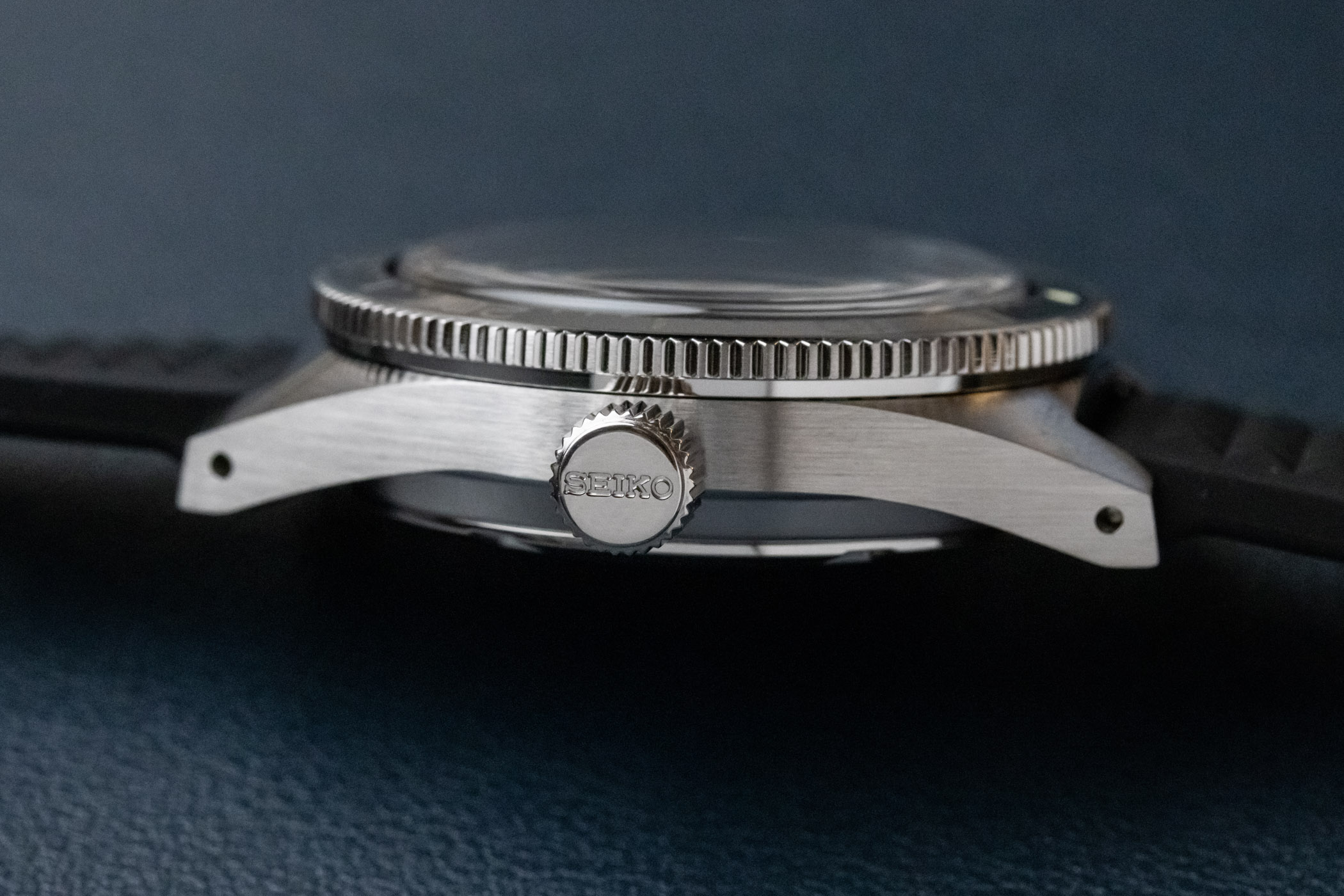
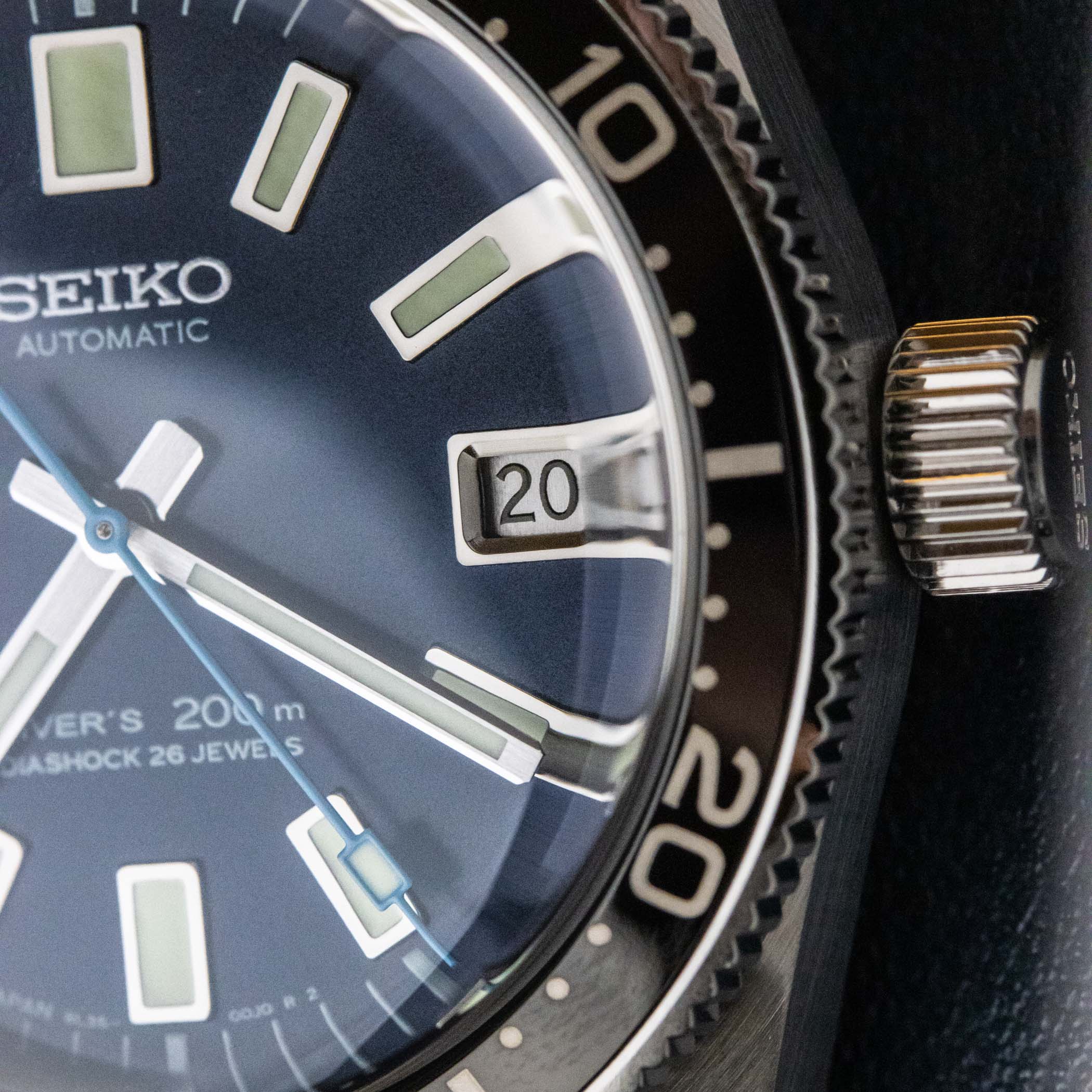


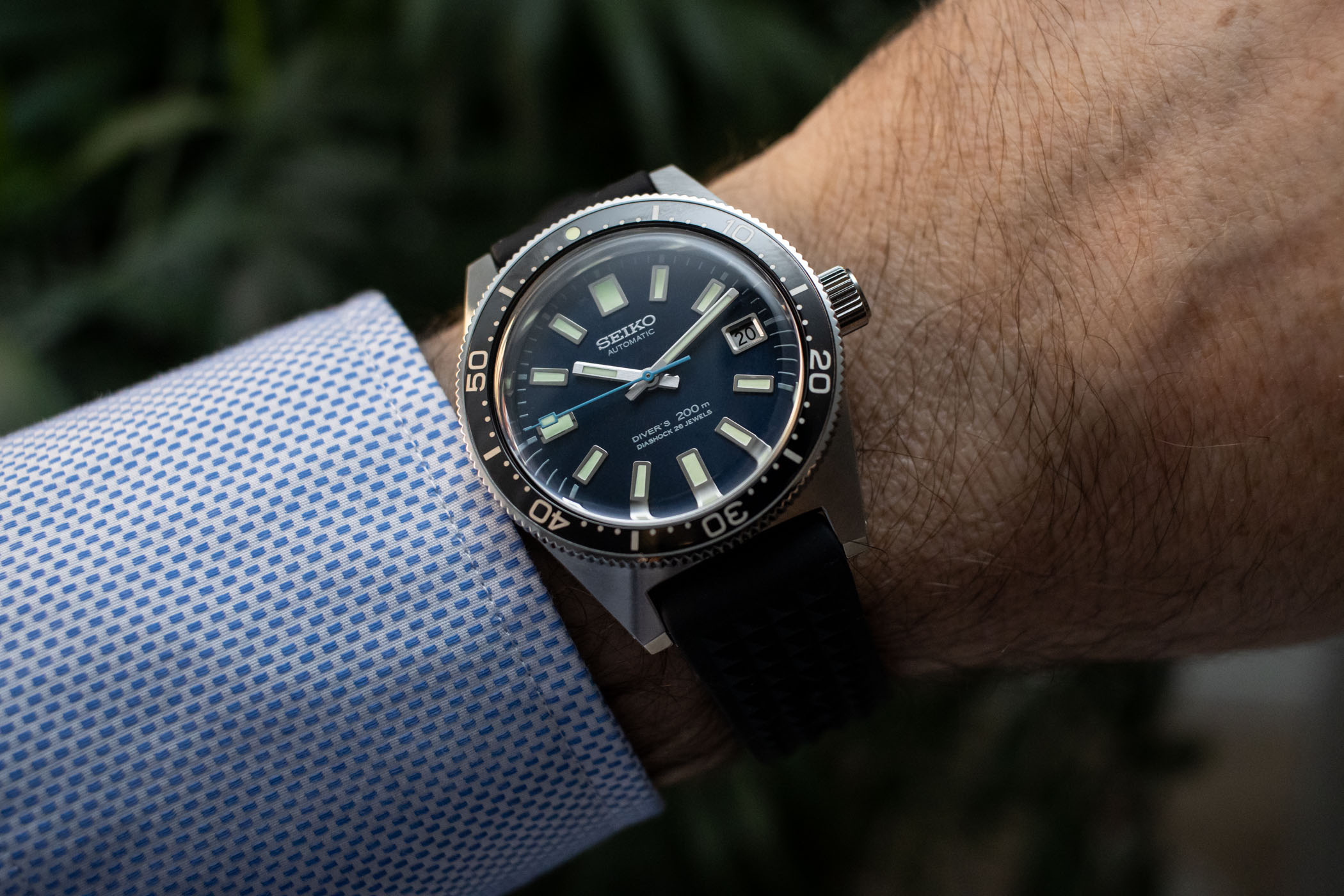
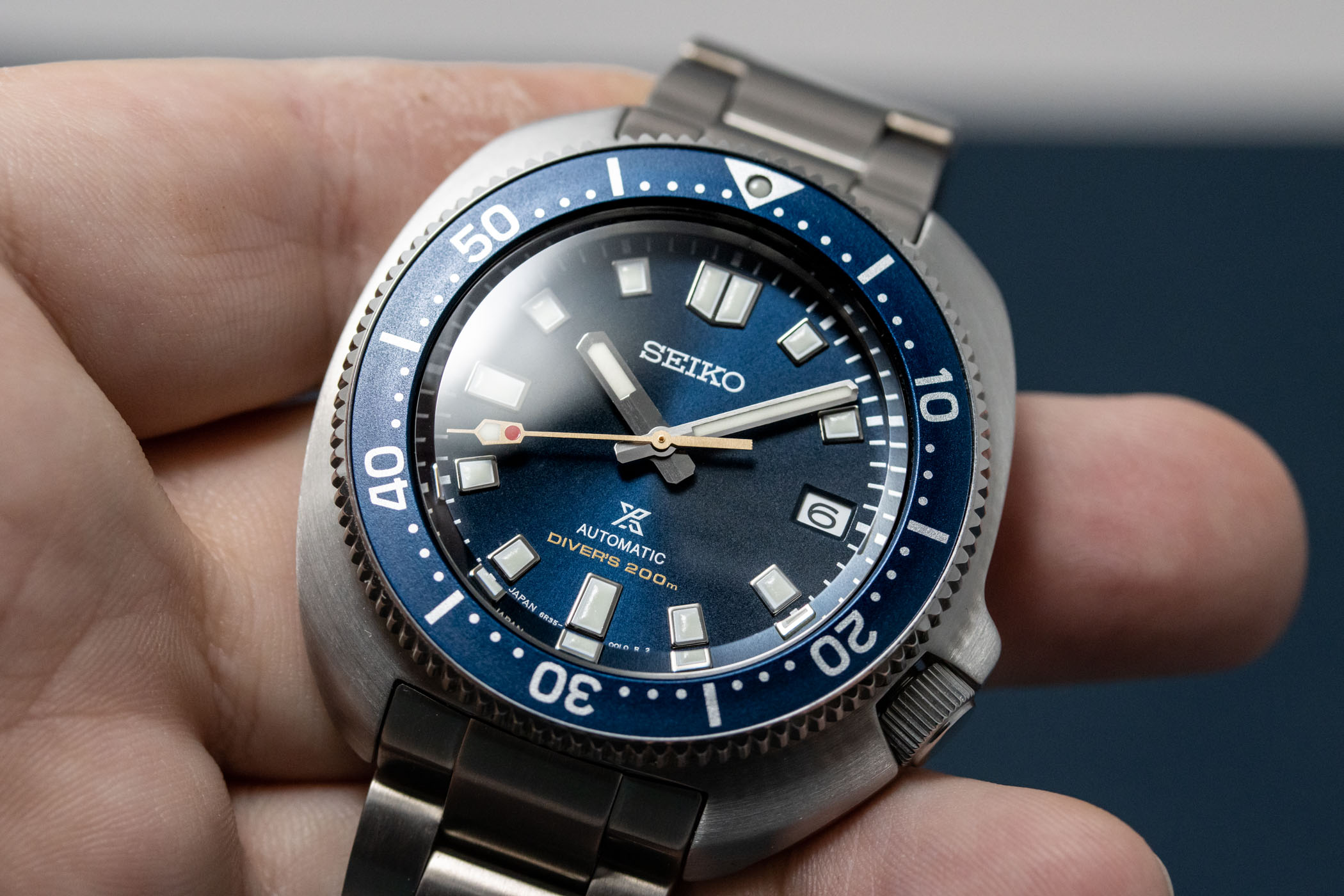




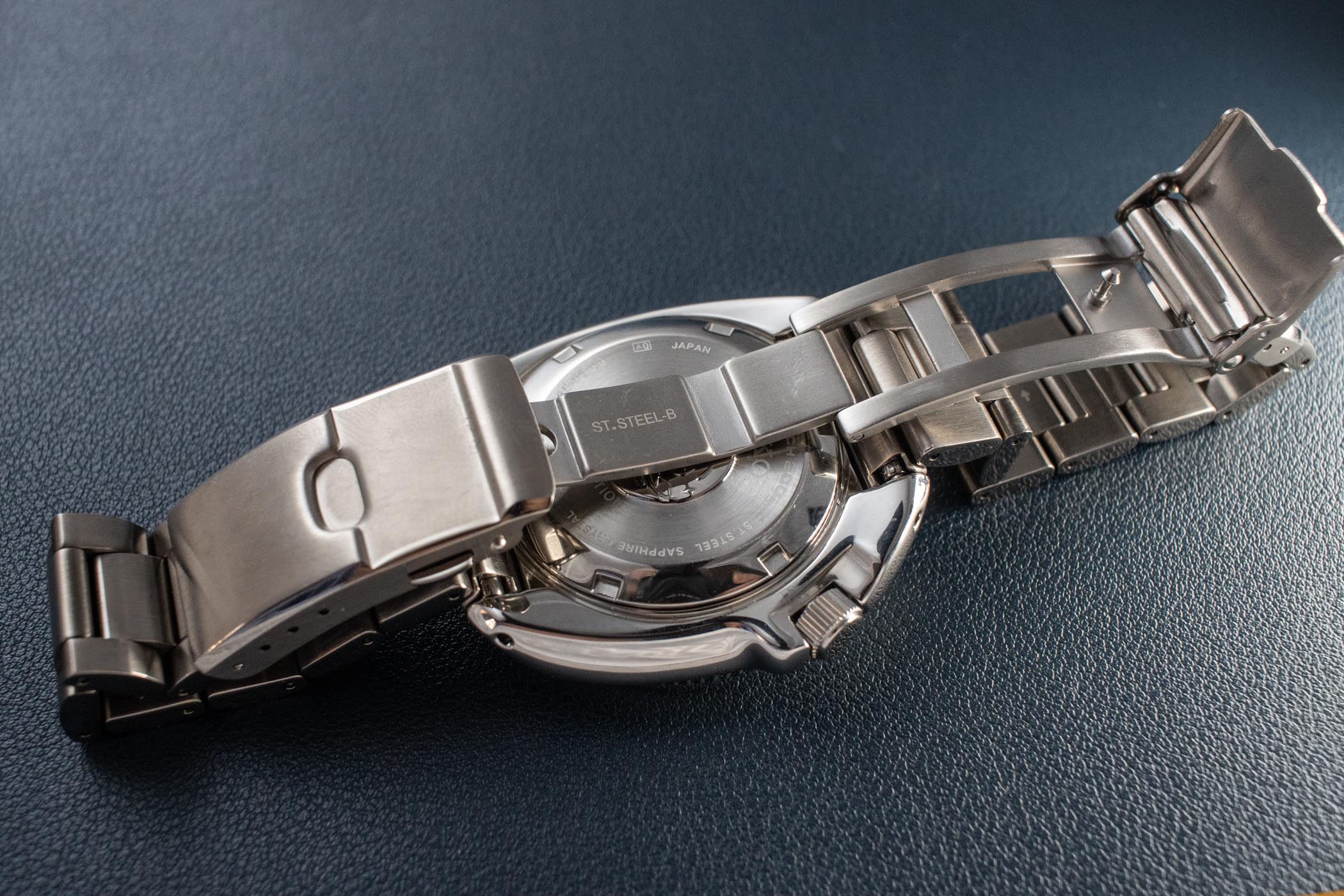



3 responses
Those turtle cases are for those with a 7 1/2 inch or larger, or the flamboyant.
The blue dial black bezel is a non starter. Do it right or go home, or sell to the color blind and then…whatever.
The turtle/pillow/cushion style case on this particular “Willard-X” line actually has shorter lug-to-lug length than any of the SLA or SPB 62MAS reinterpretations, fwiw.